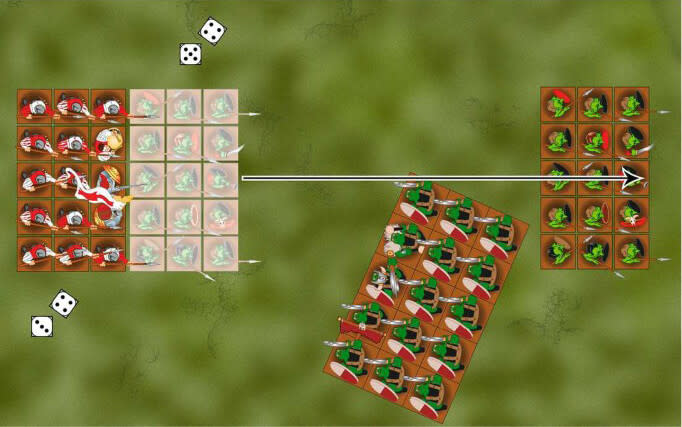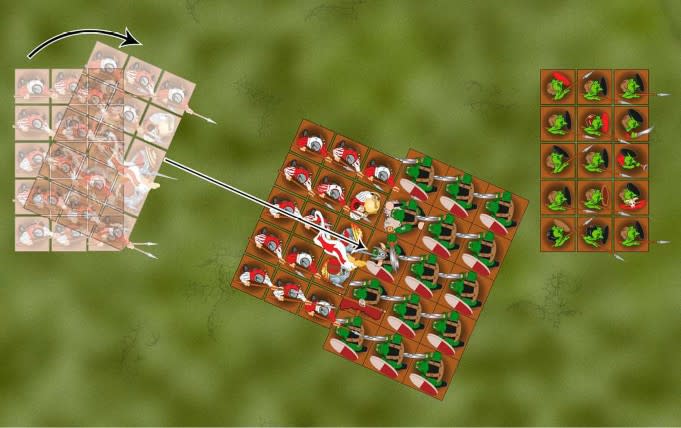If a pursuit move would take the pursuer into contact with an enemy unit, then the pursuers must charge the enemy unit.
Carry out the charge as you would in the Movement phase, following all the normal restrictions. However, you do not need to roll for the charge range – we already know from the pursuit roll that these unwitting chargers have momentum to reach the foe, whether they wished to or not. The charging unit must wheel and close the door in such a way as to maximise contact, as they would with a normal charge.
Naturally, the charged unit is taken by surprise by this impromptu assault – it is not allowed to take any charge reactions and must Hold.
If this enemy unit was already engaged in close combat, and that fight has not been resolved for this turn, then the pursuing unit will get to fight another round of close combat! If a pursuing unit is lucky enough to win a second fight in the same turn, it cannot overrun and automatically restrains pursuit (and can reform!).
If the unit that has been charged as a result of pursuit was not engaged in combat from the beginning of this combat phase, or if it was engaged but that fight has already been resolved in this combat phase, the combat is not resolved straight away, but in the combat phase of the following turn.
In the following turn's combat phase, the pursuers will still count as charging.
This might result in both sides having charging units in the same fight, in which case the charging units on both sides will get the normal bonuses conferred by charging (e.g. causing impact hits, benefiting from a lance's Strength bonus, etc., and other bonuses described later in this Rules section). Also, both sides will get the +1 Combat Result bonus, which will effectively cancel each other out.

